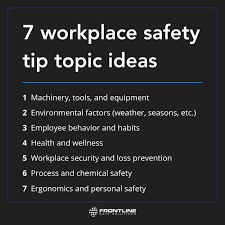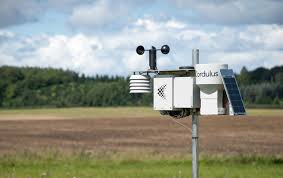The Importance of Personal Safety Equipment
Personal safety equipment plays a crucial role in protecting individuals from potential hazards and ensuring their well-being in various environments. Whether at work, home, or engaging in recreational activities, having the right safety gear can make a significant difference in preventing accidents and minimizing injuries.
Types of Personal Safety Equipment
There are various types of personal safety equipment designed to address specific risks and provide adequate protection. Some common examples include:
- Safety helmets: Essential for protecting the head from impact injuries in construction sites, industrial settings, and certain sports activities.
- Safety goggles: Protect the eyes from debris, chemicals, or other hazardous materials that could cause eye injuries.
- Ear protection: Earplugs or earmuffs help prevent hearing damage from loud noises in workplaces such as construction sites or manufacturing facilities.
- Respiratory masks: Protect against inhaling harmful particles, fumes, or gases that could pose health risks to the respiratory system.
- Safety gloves: Designed to protect hands from cuts, burns, chemicals, and other potential hazards during manual labor tasks.
- Safety footwear: Steel-toed boots or shoes provide foot protection against heavy objects, sharp materials, or electrical hazards.
The Benefits of Using Personal Safety Equipment
Wearing appropriate personal safety equipment offers several benefits:
- Prevention of injuries: Safety gear helps reduce the risk of accidents and minimizes the severity of injuries if an incident occurs.
- Compliance with regulations: Many industries have specific safety requirements that mandate the use of protective equipment to ensure a safe working environment.
- Promotion of safety culture: By prioritizing the use of safety equipment, individuals contribute to creating a culture of safety awareness and responsibility among peers and colleagues.
- Prolonged health and well-being: Protecting oneself from potential hazards through safety gear can contribute to long-term health preservation and overall well-being.
Conclusion
Personal safety equipment is an essential component of maintaining a safe environment and preventing accidents. By recognizing the importance of using appropriate safety gear and ensuring its proper utilization, individuals can significantly enhance their personal safety and minimize risks in various settings.
Essential FAQs About Personal Safety Equipment: Selection, Maintenance, and Compliance
- What are the essential types of personal safety equipment?
- How do I choose the right size and fit for personal safety gear?
- What are the regulations regarding the use of personal protective equipment in workplaces?
- Why is it important to inspect and maintain personal safety equipment regularly?
- Are there specific guidelines for storing personal safety gear when not in use?
- What training is necessary for using different types of personal protective equipment effectively?
- How often should personal safety equipment be replaced or upgraded?
- Where can individuals purchase reliable and certified personal safety gear?
What are the essential types of personal safety equipment?
When considering essential types of personal safety equipment, it is important to prioritize gear that addresses specific risks and provides adequate protection in various environments. Some key examples include safety helmets for head protection in construction sites and industrial settings, safety goggles to shield the eyes from debris or chemicals, ear protection such as earplugs or earmuffs for noise reduction, respiratory masks to guard against inhaling harmful particles or gases, safety gloves for hand protection during manual labor tasks, and safety footwear like steel-toed boots for foot protection against heavy objects or sharp materials. By understanding and utilizing these essential types of personal safety equipment, individuals can effectively mitigate risks and enhance their overall safety in different scenarios.
How do I choose the right size and fit for personal safety gear?
When selecting personal safety gear, ensuring the right size and fit is crucial for optimal protection and comfort. To choose the appropriate size, it is recommended to refer to the manufacturer’s sizing guidelines or charts specific to the safety equipment being purchased. Taking accurate measurements of your body, such as head circumference for helmets or hand size for gloves, can help determine the correct size. Additionally, trying on the gear before purchasing and making adjustments as needed can ensure a proper fit that allows for adequate protection without being too tight or loose. Prioritizing comfort and mobility while maintaining a secure fit is essential in selecting personal safety gear that effectively safeguards against potential hazards.
What are the regulations regarding the use of personal protective equipment in workplaces?
In workplaces, regulations regarding the use of personal protective equipment (PPE) are crucial for ensuring the safety and well-being of employees. Employers are typically required to provide suitable PPE to workers at no cost and ensure its proper usage. OSHA (Occupational Safety and Health Administration) sets guidelines for different industries on the types of PPE required based on specific workplace hazards. Employees must be trained on how to use, maintain, and store their PPE correctly. Regular inspections and assessments should also be conducted to guarantee that the equipment remains effective in protecting workers from potential risks. Compliance with these regulations is essential in creating a safe work environment and preventing occupational injuries or illnesses.
Why is it important to inspect and maintain personal safety equipment regularly?
Regular inspection and maintenance of personal safety equipment is crucial for ensuring its effectiveness and reliability in protecting individuals from potential hazards. By conducting routine checks, users can identify any wear and tear, damage, or malfunctions that may compromise the equipment’s ability to provide adequate protection. Regular maintenance helps extend the lifespan of safety gear, ensures that it meets safety standards, and reduces the risk of equipment failure during critical moments. Ultimately, prioritizing the inspection and maintenance of personal safety equipment enhances overall safety practices and promotes a proactive approach to preventing accidents and injuries in various environments.
Are there specific guidelines for storing personal safety gear when not in use?
When it comes to storing personal safety gear when not in use, it is essential to follow specific guidelines to maintain the effectiveness and integrity of the equipment. Proper storage practices help ensure that safety gear remains in good condition and ready for use when needed. Some general guidelines for storing personal safety equipment include keeping items in a clean, dry place away from direct sunlight, extreme temperatures, or harsh chemicals. It is also important to inspect gear regularly for any signs of damage or wear and tear and replace items as needed to guarantee optimal protection. By adhering to these storage guidelines, individuals can prolong the lifespan of their safety equipment and ensure its reliability in safeguarding against potential hazards.
What training is necessary for using different types of personal protective equipment effectively?
Understanding the proper training requirements for using different types of personal protective equipment (PPE) is essential to ensure its effective utilization. Training for PPE typically includes education on the specific equipment being used, proper fitting and adjustment techniques, maintenance and inspection guidelines, as well as understanding the limitations and potential hazards associated with each type of gear. Additionally, training often covers emergency procedures and protocols for using PPE in various scenarios to maximize its protective benefits. By receiving comprehensive training on the use of personal protective equipment, individuals can enhance their safety practices and contribute to a safer work or activity environment.
How often should personal safety equipment be replaced or upgraded?
Personal safety equipment should be regularly inspected and assessed for signs of wear and tear, damage, or expiration to ensure its effectiveness in providing protection. The frequency of replacement or upgrades depends on several factors, including the type of safety gear, usage conditions, manufacturer recommendations, and industry regulations. It is generally recommended to replace personal safety equipment if it shows visible signs of damage, deterioration, or if it no longer meets required safety standards. Additionally, periodic upgrades may be necessary to incorporate new technologies or improvements that enhance the protective capabilities of the equipment. Regular maintenance and proactive monitoring are essential to determine when personal safety equipment should be replaced or upgraded to maintain optimal safety levels.
Where can individuals purchase reliable and certified personal safety gear?
Individuals seeking reliable and certified personal safety gear can explore a variety of options to ensure they obtain high-quality equipment. Many reputable retailers specializing in safety equipment, both online and in physical stores, offer a wide range of products that meet industry standards and certifications. Additionally, individuals can look for suppliers recommended by occupational safety organizations or consult with safety professionals for guidance on selecting the right gear for their specific needs. Prioritizing purchases from established vendors with a track record of providing authentic and certified safety equipment can help individuals enhance their personal safety measures effectively.




